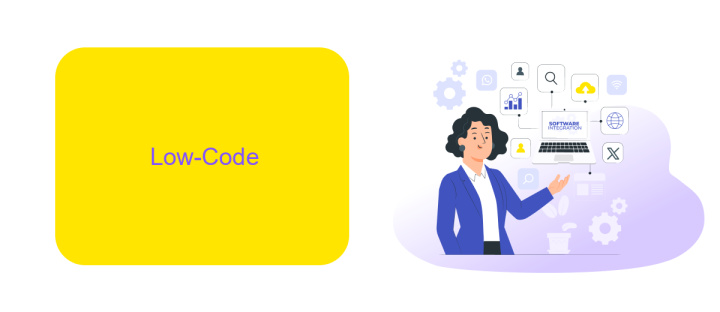Low-Code Versus No-Code
In today's rapidly evolving tech landscape, the demand for efficient and accessible software development solutions has skyrocketed. Low-code and no-code platforms have emerged as game-changers, empowering both developers and non-developers to create applications with minimal coding. This article explores the key differences, benefits, and potential use cases of low-code versus no-code platforms, helping you choose the right approach for your needs.
Introduction
The rise of digital transformation has brought about significant changes in the way businesses develop and deploy applications. Among these changes, the emergence of Low-Code and No-Code platforms stands out as a revolutionary trend. These platforms enable users with little to no programming skills to create applications rapidly, bridging the gap between business needs and IT capabilities.
- Low-Code platforms offer a more flexible environment, allowing for some level of coding to customize applications.
- No-Code platforms are designed for users with no coding experience, providing pre-built templates and drag-and-drop interfaces.
- Both platforms aim to accelerate development cycles and reduce dependency on traditional software development.
One of the critical aspects of these platforms is their ability to integrate with other systems and services. Tools like ApiX-Drive facilitate seamless integration, allowing businesses to connect various applications without extensive coding. This capability is crucial for maintaining workflow efficiency and ensuring that all business processes are synchronized.
Low-Code

Low-code platforms offer a middle ground between traditional hand-coding and no-code solutions, providing a more flexible and efficient way for developers to create applications. These platforms typically feature drag-and-drop interfaces, pre-built templates, and a range of customizable components that can be tailored to specific needs. Unlike no-code solutions, low-code platforms allow for more complex customizations and integrations, making them ideal for businesses that require unique functionalities or need to integrate with existing systems.
One of the significant advantages of low-code platforms is their ability to streamline the development process, reducing the time and effort needed to bring applications to market. For instance, services like ApiX-Drive facilitate easy integration with various APIs, enabling users to automate workflows and connect disparate systems without extensive coding knowledge. This capability not only enhances productivity but also allows businesses to adapt quickly to changing market demands, ensuring they stay competitive and innovative.
No-Code

No-Code platforms empower users to create applications without writing a single line of code. These tools are designed for individuals who may not have technical expertise but still need to develop functional software solutions. By utilizing visual interfaces and drag-and-drop features, users can build and deploy applications quickly and efficiently.
- Visual Development: No-code platforms provide a graphical interface to design and build applications.
- Pre-built Templates: Users can choose from a variety of templates to jumpstart their projects.
- Integrations: Services like ApiX-Drive facilitate seamless integration with other tools and platforms.
- Scalability: No-code solutions often offer scalability options to grow with your business needs.
No-code platforms are particularly beneficial for small businesses and startups, as they reduce development time and costs. By leveraging tools like ApiX-Drive, users can easily integrate various applications and automate workflows, further enhancing productivity. This democratizes software development, making it accessible to a broader audience and fostering innovation across industries.
Comparison

Low-code and no-code platforms are transforming the way businesses develop applications. While both approaches aim to simplify the development process, they cater to different user needs and technical proficiencies.
Low-code platforms are designed for developers who want to speed up the development process. They provide a visual interface and pre-built components, but still require some coding knowledge. No-code platforms, on the other hand, are intended for users with little to no programming experience. These platforms offer drag-and-drop functionalities and pre-configured templates to build applications without writing any code.
- Target Audience: Low-code for developers; no-code for business users.
- Customization: Low-code allows more customization through coding; no-code relies on pre-set templates.
- Complexity: Low-code can handle more complex applications; no-code is best for simpler tasks.
- Integration: Both can integrate with other services, with tools like ApiX-Drive simplifying the process.
In summary, the choice between low-code and no-code depends on the specific needs of the project and the technical skills of the user. Low-code platforms offer more flexibility and customization, while no-code platforms provide ease of use and speed for simpler applications.


Conclusion
In conclusion, both Low-Code and No-Code platforms offer significant advantages for businesses aiming to accelerate their development processes and reduce dependency on traditional coding. Low-Code platforms provide a more flexible environment for developers, allowing them to create complex applications with minimal hand-coding. On the other hand, No-Code platforms empower non-technical users to build functional applications without any coding knowledge, democratizing the app development process.
Choosing between Low-Code and No-Code depends largely on the specific needs and technical expertise of the organization. For instance, if your team requires robust customization and has some coding skills, Low-Code might be the better option. Conversely, for quick deployment and ease of use, No-Code platforms are ideal. Additionally, services like ApiX-Drive can significantly streamline the integration process, enabling seamless connections between various applications and systems. Ultimately, both approaches can drive innovation and efficiency, making them valuable assets in the modern digital landscape.
FAQ
What is the main difference between Low-Code and No-Code platforms?
Who can benefit from using Low-Code and No-Code platforms?
Can Low-Code and No-Code platforms handle complex applications?
How secure are Low-Code and No-Code platforms?
What are some common use cases for Low-Code and No-Code platforms?
Apix-Drive is a simple and efficient system connector that will help you automate routine tasks and optimize business processes. You can save time and money, direct these resources to more important purposes. Test ApiX-Drive and make sure that this tool will relieve your employees and after 5 minutes of settings your business will start working faster.

